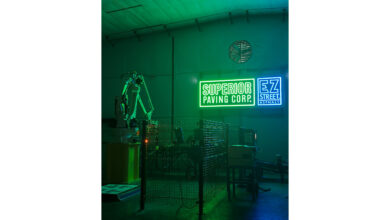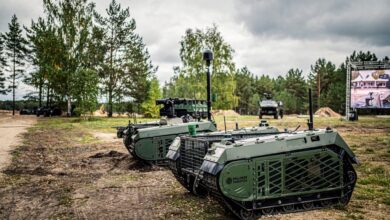Modular Robotics Market Will Reach at CAGR of 18.1% by 2030 As Revealed In New Report

The modular robotics market is witnessing an unprecedented surge in growth, fueled by rapid technological advancements and a burgeoning demand for automation across diverse industries. These versatile robotic systems, designed with interchangeable modules, offer unparalleled flexibility and adaptability, making them indispensable in sectors ranging from automotive and electronics to healthcare and logistics. As industries strive for higher efficiency, precision, and safety, the integration of modular robots into manufacturing and operational processes is becoming increasingly essential. This dynamic market, characterized by continuous innovation and expanding applications, is set to redefine the future of industrial automation.
The Modular Robotics Market size was estimated at USD 10.5 billion in 2022 and is expected to reach USD 40.68 billion by 2030 at a CAGR of 18.1% during the forecast period of 2023-2030.
The global modular robotics market is poised for remarkable growth, driven by advancements in technology, increasing demand for automation, and the rising need for efficient manufacturing processes. This press release provides an in-depth analysis of the market, outlining its scope, key drivers, opportunities, and challenges. The report also highlights the market dynamics that are shaping the future of modular robotics.
Download Sample Copy of Report: www.snsinsider.com/sample-request/3629
Top Key Players:
- ABB Ltd.
- Acutronic Robotics
- KUKA AG
- Mitsubishi Electric Corp.
- FANUC Corporation
- Kawasaki Heavy Industries Ltd.
- Yaskawa Electric Corporation
- Denso Corporation
- Universal Robots
- Nachi-Fujikoshi Corp.
- Rethink Robotics
Market Scope
Modular robotics refers to robots that can be customized and reconfigured to perform various tasks. These systems consist of interchangeable modules that can be easily assembled and disassembled, offering flexibility and adaptability for a range of applications. The market encompasses various industries, including automotive, electronics, healthcare, and logistics, where the demand for automation and precision is paramount.
Market Segmentation:
By Robot Type
- Articulated modular robots
- Cartesian modular robots
- SCARA modular robots
- Parallel modular robots
- Collaborative modular robots
- Other modular robots
- Spherical robots
- Cylindrical robots
By Industry
- Automotive
- Electrical and Electronics
- Plastic, Rubber, and Chemicals
- Metals and Machinery
- Food & Beverages
- Precision Engineering and Optics
- Pharmaceuticals and Cosmetics
- Others
Access this Report www.snsinsider.com/discount/3629
Market Analysis
This growth is driven by technological innovations and the increasing adoption of robotics in industrial applications. The Asia-Pacific region holds the largest market share, attributed to the presence of major manufacturing hubs and the rapid industrialization in countries like China and India. North America and Europe are also significant markets, driven by advancements in automation technologies and supportive government policies.
Drivers
- Technological Advancements: Innovations in artificial intelligence (AI), machine learning (ML), and sensor technologies are enhancing the capabilities of modular robots, making them more efficient and versatile.
- Increasing Demand for Automation: Industries are increasingly adopting automation to improve efficiency, reduce operational costs, and enhance precision, driving the demand for modular robotics.
- Flexibility and Scalability: Modular robots offer unmatched flexibility and scalability, allowing businesses to reconfigure robots for different tasks and scale operations without significant investment in new machinery.
- Workplace Safety: The integration of robotics in hazardous environments reduces the risk to human workers, enhancing workplace safety and compliance with regulatory standards.
Opportunities
- Expanding Applications in Healthcare: Modular robotics is finding new applications in the healthcare sector, including surgical robots, rehabilitation devices, and robotic assistants, offering significant growth opportunities.
- Adoption in Small and Medium-Sized Enterprises (SMEs): As the cost of modular robots decreases, SMEs are increasingly able to leverage these technologies to enhance productivity and competitiveness.
- Development of Collaborative Robots (Cobots): The rise of collaborative robots, designed to work alongside humans, is opening up new avenues for modular robotics, particularly in precision tasks and quality control.
Key Factors
- Customization: The ability to customize and reconfigure modular robots for specific tasks is a significant advantage, catering to the unique needs of various industries.
- Cost Efficiency: Modular robots offer cost savings over time by reducing the need for multiple specialized robots and allowing for easy upgrades and maintenance.
- Integration with IoT: The integration of modular robots with the Internet of Things (IoT) enables real-time monitoring and data analysis, improving operational efficiency and decision-making.
Complete Report: www.snsinsider.com/checkout/3629
Market Dynamics
The modular robotics market is characterized by dynamic changes influenced by technological advancements, regulatory developments, and shifts in industrial demands. Key players in the market are focusing on research and development to enhance the capabilities of modular robots, ensuring they meet the evolving needs of various industries. Strategic partnerships and collaborations are also playing a crucial role in driving market growth, enabling companies to leverage complementary strengths and expand their market presence.
Challenges
- High Initial Investment: The upfront cost of acquiring and implementing modular robotic systems can be significant, posing a barrier for some businesses, particularly SMEs.
- Technical Complexity: The design, programming, and integration of modular robots require specialized skills and knowledge, which can be a challenge for companies lacking in-house expertise.
- Regulatory and Compliance Issues: Navigating the complex regulatory landscape and ensuring compliance with safety standards can be challenging for manufacturers and end-users of modular robotics.
- Maintenance and Upkeep: Ensuring the continuous operation of modular robots requires regular maintenance and updates, which can incur additional costs and resources.
Conclusion
The modular robotics market is on a trajectory of robust growth, driven by technological advancements, increasing automation, and the need for flexible manufacturing solutions. While challenges such as high initial investment and technical complexity exist, the opportunities presented by expanding applications and the development of collaborative robots are significant. As industries continue to embrace automation and innovative technologies, the demand for modular robotics is expected to surge, shaping the future of manufacturing and industrial operations.
News From
Category: Industry Reports & Market Analysis Profile: In the fast-paced business biospheres, businesses need to constantly evolve to grow and stay relevant. At SNS Insider, we believe in adopting a data-oriented approach to aid organizations be familiar with the nerve of the industry.
This email address is being protected from spambots. You need JavaScript enabled to view it.



